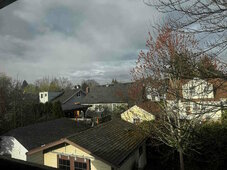I did not read the whole thread. I am, and always have been, off-grid. I have little authority to speak on anything else. That being said, and with your desires in mind, this is what I would do in your situation. Build an off-grid, standalone system with batteries. Build it like an rv system, which can accept power from the grid to run loads and charge the batteries when they get low, then run whatever loads you choose off that system. In this manner, you will get the advantage of running loads off solar when it is available, and you will have grid backup when needed, without the possibility of back-feeding the grid, and without requiring permissions. You are simply plugging in a battery charger. I believe this is called a 'power island' or something. You could literally purchase an rv power converter, or you can get a charge controller or all-in-one which is purpose designed. Then all you have to do is decide which loads get connected to your solar system. If I'm ever in a situation where I have the grid available, I would do this. This setup will also function as an emergency backup during grid failure. Recommend loads would be things that have fairly consistent use, like refrigerators, home office, ebike or other ev charging, etc. Rechargeable tools, or other critical loads.




